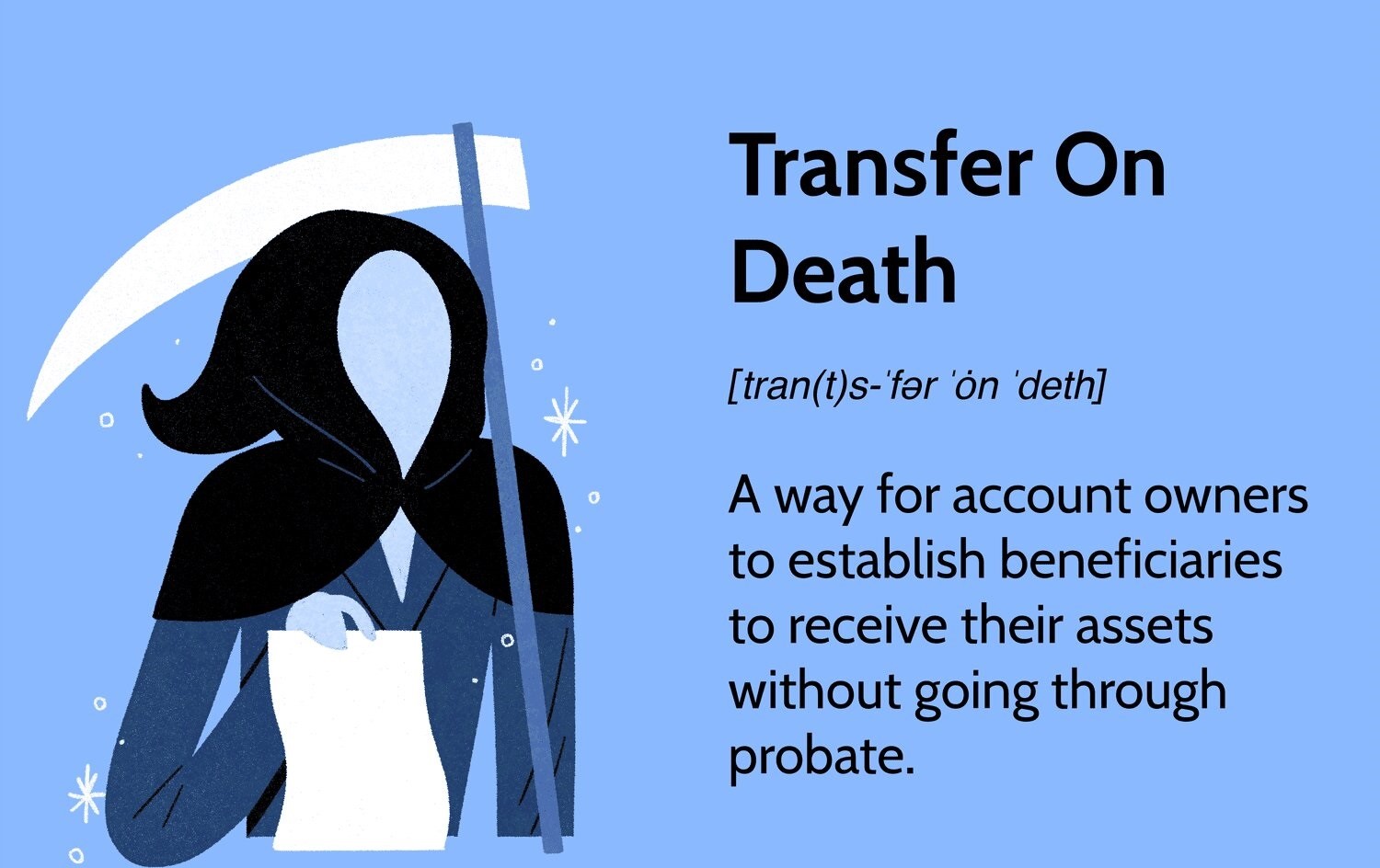What Is Beneficial Ownership?
Beneficial ownership refers to the true ownership of an asset or entity, even if the legal ownership is held by a different individual or organization. It defines the individuals who ultimately benefit from and control the asset, whether it is property, business shares, or financial accounts.
In the context of banking, beneficial ownership plays a crucial role in ensuring transparency, detecting financial crimes, and preventing money laundering. By understanding who the true owners of accounts and assets are, banks can effectively assess the associated risks and comply with regulatory requirements.
Beneficial ownership extends beyond the direct owner of an asset. It involves identifying individuals who have a substantial interest or control in an entity, such as shareholders, partners, or senior executives. This information helps banks establish a complete picture of their customers, evaluate potential money laundering risks, and fulfill their responsibilities in combating financial crimes.
Understanding beneficial ownership is vital for banks to maintain the integrity of their financial systems and prevent illicit activities. By ensuring that the true owners of assets and accounts are disclosed, banks can contribute to the overall stability and security of the banking industry as a whole.
Why Is Beneficial Ownership Important in Banking?
Beneficial ownership is of paramount importance in the banking industry for several key reasons. Firstly, it helps banks assess various risks associated with their customers and their transactions. By understanding the true owners of accounts and assets, banks can better evaluate the legitimacy of financial activities and identify potential red flags.
Secondly, beneficial ownership information is essential for banks to comply with anti-money laundering (AML) regulations and other financial crime prevention measures. Banks are required to implement rigorous due diligence procedures to detect and deter illicit financial activities. By knowing the beneficial owners, banks can adequately assess the source of funds and determine if there are any suspicious activities.
Additionally, beneficial ownership information helps banks in building strong customer relationships based on credibility and trust. By ensuring transparency and disclosing the true owners of assets, banks can build a reputation for integrity, attract legitimate customers, and enhance their overall customer relationships.
Moreover, by identifying beneficial owners, banks contribute to the broader efforts of stabilizing and safeguarding the financial system. By detecting and preventing money laundering, terrorist financing, and other illicit activities, banks protect the integrity of the banking industry and minimize the harmful impacts of financial crimes on society.
Furthermore, as part of the global fight against corruption, beneficial ownership plays a crucial role. By exposing hidden ownership structures and ensuring transparency, banks contribute to reducing corruption on a global scale. This, in turn, leads to increased economic stability and growth.
In summary, beneficial ownership is of utmost importance in the banking industry. It helps banks assess risks, comply with regulatory requirements, build strong relationships with customers, contribute to financial stability, and fight against corruption. By understanding and embracing the significance of beneficial ownership, banks can play a proactive role in safeguarding the financial system and promoting a transparent and accountable banking industry.
How Does Beneficial Ownership Impact Anti-Money Laundering (AML) Efforts?
Beneficial ownership plays a crucial role in the fight against money laundering and other financial crimes. By understanding the true owners of assets and accounts, banks can effectively assess the risk of illicit financial activities and implement robust anti-money laundering (AML) measures.
One of the key ways in which beneficial ownership impacts AML efforts is by enabling banks to conduct thorough customer due diligence. By identifying the beneficial owners, banks can gather important information about their customers, including their source of funds, business relationships, and potential exposure to financial crime risks. This knowledge allows banks to establish risk profiles and detect any suspicious transactions or patterns.
Beneficial ownership also helps banks in implementing enhanced transaction monitoring systems. By having a clear understanding of who ultimately controls the assets and accounts, banks can better identify any discrepancies or unusual activities that may indicate money laundering or other illicit financial activities. This enables banks to promptly report suspicious transactions to the relevant authorities and take appropriate action.
In addition, beneficial ownership plays a significant role in conducting effective risk assessments. By understanding the ownership structure of their customers, banks can assess the level of risk associated with each client and implement risk-based controls accordingly. This proactive approach allows banks to allocate their resources more efficiently and focus on high-risk customers or transactions.
Moreover, beneficial ownership information is crucial in conducting investigations and sharing intelligence with law enforcement agencies. In cases where suspicious activities are detected, banks can collaborate with authorities and provide valuable information about the beneficial owners involved. This facilitates the investigation and prosecution of financial crimes, ultimately contributing to the deterrence of money laundering and the dismantling of criminal networks.
Lastly, the availability of beneficial ownership information enhances the overall transparency and accountability of the financial system. It allows regulators and supervisory bodies to monitor and assess the compliance of banks with AML regulations. By ensuring that banks have accurate and up-to-date beneficial ownership information, authorities can detect any potential gaps or weaknesses in the AML framework and take appropriate measures to strengthen it.
In summary, beneficial ownership has a significant impact on anti-money laundering efforts. It enables banks to conduct thorough due diligence, enhance transaction monitoring, assess risks, collaborate with law enforcement agencies, and improve overall transparency and accountability. By incorporating beneficial ownership into their AML measures, banks contribute to the global fight against financial crimes and help maintain the integrity of the financial system.
The Role of Banks in Identifying Beneficial Owners
Banks play a vital role in identifying beneficial owners as part of their due diligence processes. They have a responsibility to gather and verify accurate beneficial ownership information to ensure transparency, mitigate risks, and comply with regulatory requirements. Here are some key aspects of the role banks play in identifying beneficial owners:
Customer Onboarding: When a new customer applies for an account or financial service, banks are responsible for collecting information about the customer’s beneficial owners. This includes obtaining details such as name, address, contact information, and percentage of ownership. Banks must also validate the information provided to ensure its accuracy and authenticity.
Verification of Identity: Banks have the obligation to verify the identity of both the account holder and the beneficial owners. This involves obtaining documentary evidence such as identity cards, passports, or other reliable identification documents. Banks may also use electronic verification methods and databases to authenticate the identity of the beneficial owners.
Risk Assessment: Banks must assess the risk associated with their customers and their beneficial owners. This involves evaluating the nature of the business, the source of funds, and any potential exposure to money laundering or other financial crimes. Banks use a risk-based approach to allocate resources and implement appropriate measures to manage the identified risks.
Ongoing Monitoring: Banks are responsible for conducting ongoing monitoring of customer accounts and their beneficial owners. They must keep relevant records up to date and conduct periodic reviews to ensure the accuracy of beneficial ownership information. This helps banks identify any changes in ownership structures or suspicious activities that may require further investigation.
Reporting to Authorities: If banks identify suspicious transactions or activities involving their customers and their beneficial owners, they are obligated to report them to the appropriate authorities. This includes filing Suspicious Activity Reports (SARs) and cooperating with law enforcement agencies in investigations relating to money laundering, terrorist financing, or other financial crimes.
Compliance with Regulations: Banks must comply with regulatory frameworks and guidelines regarding the identification and verification of beneficial owners. These regulations vary across jurisdictions but are generally aimed at enhancing transparency, combating money laundering, and preventing the misuse of the financial system for illicit activities. Banks must stay updated on these regulations and ensure their adherence to them.
Overall, banks play a critical role in identifying beneficial owners as part of their customer due diligence processes. By collecting and verifying accurate information, assessing risks, conducting ongoing monitoring, and complying with regulatory requirements, banks contribute to the transparency and integrity of the financial system while mitigating the risks associated with financial crimes.
The Challenges of Determining Beneficial Ownership
Determining beneficial ownership can be a complex and challenging task for banks and financial institutions. Various factors contribute to these challenges, including legal complexities, the use of complex ownership structures, and the lack of standardized reporting. Here are some of the key challenges banks face in determining beneficial ownership:
Legal Complexity: The legal frameworks surrounding ownership and beneficial ownership vary across jurisdictions. Different countries have different definitions and requirements for beneficial ownership, leading to inconsistencies in reporting and compliance. This creates challenges for banks operating in multiple jurisdictions, as they need to navigate through various legal requirements and ensure compliance with different regulatory regimes.
Complex Ownership Structures: Beneficial ownership can become difficult to determine when complex ownership structures are involved. This includes structures such as trusts, offshore entities, and nominee arrangements, which are often used to obscure the true ownership of assets. These structures can involve multiple layers of ownership and control, making it challenging for banks to identify the ultimate beneficiaries.
Inadequate Disclosure Practices: In some cases, individuals or entities may fail to disclose their beneficial ownership information accurately or completely. They may intentionally hide their ownership interests to avoid scrutiny or legal obligations. This lack of transparency makes it challenging for banks to obtain accurate information about the true owners of assets and accounts.
Lack of Standardized Reporting: The lack of standardized reporting requirements and formats for beneficial ownership information can create challenges for banks. Different jurisdictions may have different reporting obligations, making it difficult for banks to consolidate and analyze the data effectively. This lack of standardization also hinders data sharing and collaboration between banks and regulatory authorities.
International Cooperation: Beneficial ownership determination becomes more challenging when dealing with cross-border transactions. The lack of international cooperation and data-sharing agreements between jurisdictions can hinder banks’ ability to trace beneficial owners across different countries. This creates opportunities for individuals and entities to exploit regulatory gaps and engage in illicit activities.
Data Quality and Availability: The accuracy and availability of beneficial ownership data can also be a challenge. Banks rely on their customers to provide accurate information about their beneficial owners, but errors or intentional misrepresentations can occur. Additionally, accessing reliable and up-to-date information from public and private sources can be challenging, especially when dealing with offshore entities and complex ownership structures.
Technological Limitations: Banks may face technological limitations in effectively collecting, analyzing, and storing beneficial ownership information. Legacy systems or inadequate data management infrastructure can hinder banks’ ability to handle large volumes of data efficiently. Implementing robust technology solutions and leveraging innovative tools can help overcome these limitations.
In summary, determining beneficial ownership poses several challenges for banks. These challenges arise from legal complexities, complex ownership structures, inadequate disclosure practices, lack of standardized reporting, international cooperation issues, data quality and availability concerns, and technological limitations. Banks must address these challenges through robust compliance frameworks, enhanced due diligence processes, international cooperation initiatives, and investments in advanced technology systems.
The Benefits of Enhanced Beneficial Ownership Transparency
Enhanced beneficial ownership transparency offers several significant benefits for banks, financial institutions, regulators, and society as a whole. By promoting openness and accountability, it helps combat financial crimes, strengthen the integrity of the financial system, and foster economic growth. Here are some key benefits of enhanced beneficial ownership transparency:
Combatting Financial Crimes: Enhanced transparency in beneficial ownership information enables better detection and prevention of financial crimes, such as money laundering, terrorist financing, and corruption. By understanding the true owners of assets and accounts, banks can identify suspicious activities, verify the legitimacy of funds, and promptly report any irregularities to the relevant authorities.
Deterrence of Illicit Activities: The availability of accurate beneficial ownership information acts as a deterrent for individuals and entities attempting to engage in illicit activities. When potential wrongdoers know that their ownership details will be disclosed and scrutinized, they are less likely to misuse the financial system for illegal purposes. This contributes to a safer and more secure banking environment.
Improved Risk Assessment: Enhanced beneficial ownership transparency allows banks to conduct more accurate risk assessments. By understanding the true owners of assets and accounts, banks can evaluate the associated risks more effectively. This enables them to allocate resources appropriately, implement risk-based controls, and better manage the potential risks associated with their customer relationships.
Enhanced Regulatory Compliance: Transparency in beneficial ownership information helps banks ensure compliance with anti-money laundering (AML) regulations and other financial crime prevention measures. By having access to accurate and up-to-date beneficial ownership details, banks can fulfill their regulatory obligations, avoid potential penalties, and build a stronger framework for regulatory compliance.
Strengthened Customer Relationships: Enhanced transparency in beneficial ownership fosters trust and credibility in the banking industry. When customers know that their beneficial ownership information is treated confidentially and securely, they are more likely to engage in long-term relationships with banks. This strengthened trust leads to improved customer satisfaction and loyalty.
Promotion of Economic Growth: Transparency in beneficial ownership information contributes to economic growth by minimizing opportunities for corruption and illicit financial activities. When the financial system is perceived as transparent, fair, and accountable, it attracts more legitimate investments and encourages economic development. This, in turn, creates a favorable environment for businesses and stimulates overall economic growth.
International Cooperation: Enhanced beneficial ownership transparency facilitates international cooperation and information sharing between jurisdictions. When banks across different countries have access to accurate and standardized beneficial ownership information, it becomes easier to track and investigate cross-border financial crimes. This collaboration strengthens global efforts in combating money laundering, terrorist financing, and other illicit activities.
In summary, enhanced beneficial ownership transparency offers numerous benefits for banks, financial institutions, regulators, and society. It helps combat financial crimes, deter illicit activities, improve risk assessments, ensure regulatory compliance, strengthen customer relationships, promote economic growth, and facilitate international cooperation. By embracing and promoting transparency in beneficial ownership, the banking industry can contribute to a safer, more accountable, and resilient financial system.
Regulatory Requirements for Beneficial Ownership Reporting
Regulatory requirements for beneficial ownership reporting vary across jurisdictions but share the common goal of promoting transparency, mitigating financial crime risks, and ensuring regulatory compliance. Here are some key aspects of regulatory requirements for beneficial ownership reporting:
Legal Frameworks: Regulatory requirements for beneficial ownership reporting are typically defined by national legislation, international standards, and regulatory guidelines. These frameworks establish the obligations and responsibilities of banks and financial institutions in identifying and reporting beneficial ownership information.
Definition of Beneficial Ownership: Regulatory frameworks provide definitions of beneficial ownership that identify the individuals or entities who have ultimate control or economic interests in assets or accounts. These definitions often encompass majority ownership, significant control, or direct and indirect interests in an entity or transaction.
Identification and Verification: Regulatory requirements specify the processes and procedures for identifying and verifying beneficial owners. Banks are generally required to collect accurate and up-to-date information about the beneficial owners, including their identities, addresses, and other relevant details. Verification procedures may involve obtaining documentary evidence or using electronic identity verification tools.
Reporting Obligations: Regulatory frameworks outline the reporting obligations for banks regarding beneficial ownership information. This includes the submission of periodic reports to regulatory authorities, typically in a standardized format. Reports must include details about the beneficial owners, their ownership percentages, and any changes in ownership structures as they occur.
Record Keeping: Banks are generally required to maintain comprehensive records of beneficial ownership information, including relevant documentation and transaction history. These records must be up-to-date, readily accessible, and securely stored to facilitate audits, regulatory examinations, and law enforcement requests.
Client Due Diligence (CDD) Requirements: Regulatory requirements often impose enhanced client due diligence obligations on banks for high-risk customers or transactions. Banks are required to conduct more thorough investigations and risk assessments when dealing with customers who present higher money laundering or terrorist financing risks. This includes obtaining additional information about beneficial owners and conducting ongoing monitoring to detect any suspicious activities.
Information Sharing and Cooperation: Regulatory frameworks may promote information sharing and cooperation between banks and regulatory authorities to facilitate the identification and investigation of beneficial owners involved in financial crimes. Banks may be required to share beneficial ownership information with designated authorities, respond to information requests, or participate in collaborative efforts to combat money laundering and other illicit activities.
Penalties and Enforcement: Regulatory frameworks establish penalties and enforcement mechanisms for non-compliance with beneficial ownership reporting requirements. Banks that fail to meet their obligations may be subject to fines, sanctions, or other disciplinary actions. These penalties are designed to ensure that banks fulfill their reporting responsibilities and maintain the integrity of the financial system.
In summary, regulatory requirements for beneficial ownership reporting set out the obligations and responsibilities of banks in identifying, verifying, and reporting beneficial ownership information. These requirements are aimed at promoting transparency, mitigating financial crime risks, and ensuring compliance with national and international standards. By adhering to these regulatory requirements, banks contribute to the overall effectiveness of anti-money laundering efforts and help maintain the integrity of the financial system.
Steps Banks Can Take to Ensure Compliance with Beneficial Ownership Regulations
Compliance with beneficial ownership regulations is essential for banks to maintain transparency, mitigate financial crime risks, and avoid regulatory penalties. Here are some key steps that banks can take to ensure compliance with beneficial ownership regulations:
Educate Staff: Banks should provide comprehensive training and education programs to their staff regarding beneficial ownership regulations. This includes educating employees about the definition of beneficial ownership, the importance of compliance, and the procedures for identifying and verifying beneficial owners.
Implement Robust Due Diligence Processes: Banks should establish robust customer due diligence (CDD) processes to identify and verify beneficial owners. This includes collecting accurate and up-to-date information about the beneficial owners and validating their identities through appropriate documentation or electronic verification tools.
Enhance Transaction Monitoring: Banks should implement effective transaction monitoring systems to detect and report suspicious activities related to beneficial ownership. This involves setting up robust alerts and risk-based controls to identify unusual patterns, high-value transactions, or transactions involving high-risk customers and their beneficial owners.
Maintain Updated Records: Banks should maintain comprehensive and up-to-date records of beneficial ownership information. This includes keeping track of any changes in ownership structures, verifying the accuracy of the information periodically, and implementing processes to update the records as necessary.
Establish Reporting Mechanisms: Banks should establish reporting mechanisms to meet their obligations for beneficial ownership reporting. This includes ensuring that the required reports are submitted to the relevant regulatory authorities in a timely manner and in the specified format. Banks should also maintain clear documentation of the reports submitted for audit and compliance purposes.
Engage in Information Sharing: Banks should actively participate in information sharing initiatives and cooperate with regulatory authorities in combating financial crimes. This includes sharing beneficial ownership information when required, responding to information requests, and collaborating with authorities in investigations related to money laundering or other illicit activities.
Conduct Ongoing Monitoring: Banks should implement ongoing monitoring processes to continuously assess and review the risk profiles of customers and their beneficial owners. This involves conducting periodic reviews to ensure the accuracy and relevance of the beneficial ownership information and detecting any changes or suspicious activities that may require further investigation.
Invest in Technology Solutions: Banks should invest in technology solutions that facilitate compliance with beneficial ownership regulations. This may include implementing advanced data management systems, automated identity verification tools, and analytics platforms to effectively collect, store, analyze, and report beneficial ownership information.
Regular Internal Audits: Banks should conduct regular internal audits to ensure that they are complying with beneficial ownership regulations. Internal audits provide an opportunity to review processes, identify any areas of non-compliance, and take corrective actions to improve compliance procedures.
Stay Updated on Regulatory Changes: Banks should stay informed about regulatory changes and developments related to beneficial ownership regulations. This includes monitoring updates from regulatory authorities, participating in industry forums, and engaging in ongoing training to ensure that compliance procedures align with current regulations.
By taking these steps, banks can strengthen their compliance with beneficial ownership regulations, enhance transparency, and contribute to the overall integrity of the financial system.
Best Practices for Addressing Beneficial Ownership Risks in Banking
Addressing beneficial ownership risks is crucial for banks to maintain transparency, mitigate financial crime risks, and ensure compliance with regulatory requirements. Here are some best practices that banks can adopt to effectively address beneficial ownership risks:
Enhanced Due Diligence: Implement robust customer due diligence (CDD) processes that include enhanced checks for high-risk customers and their beneficial owners. This can involve conducting more in-depth investigations, verifying the accuracy of beneficial ownership information, and using advanced technology tools for identity verification.
Risk-Based Approach: Adopt a risk-based approach when assessing beneficial ownership risks. Evaluate the associated risks based on factors such as the type of business, customer behavior, and jurisdiction involved. Allocate resources and implement appropriate controls based on the identified risks to prevent financial crimes effectively.
Technology Integration: Leverage advanced technology solutions to help streamline beneficial ownership processes and improve risk management. Implement data analytics tools, automated transaction monitoring systems, and enhance data management capabilities to detect and alert suspicious activities related to beneficial ownership.
Information Sharing: Engage in information sharing initiatives and collaborations with regulatory authorities and law enforcement agencies. Share relevant beneficial ownership information when necessary to assist in investigations or to contribute to the prevention of financial crimes. Participation in public-private partnerships can also help strengthen the collective response to beneficial ownership risks.
Employee Training and Awareness: Provide comprehensive training programs for employees to ensure they understand the importance of beneficial ownership compliance and can identify red flags related to potential money laundering or fraud. Regularly update employees on regulatory changes and emerging risks to enhance their awareness and knowledge.
Periodic Reviews and Audits: Conduct periodic reviews and internal audits to assess the effectiveness of beneficial ownership controls and compliance procedures. This includes reviewing the accuracy and completeness of beneficial ownership records, evaluating the performance of transaction monitoring systems, and identifying areas for improvement.
Collaboration with External Experts: Seek assistance and guidance from external experts, such as legal advisors or compliance consultants, to enhance expertise and ensure compliance with beneficial ownership regulations. These experts can provide insights into regulatory changes, emerging risks, and best practices in addressing beneficial ownership risks.
Proactive Monitoring of Changes: Continuously monitor changes in beneficial ownership structures and ownership percentages, especially for high-risk customers or those operating in high-risk jurisdictions. Promptly investigate any significant changes or inconsistencies and determine if enhanced due diligence measures are necessary.
Consistent Regulatory Compliance: Stay updated on regulatory requirements related to beneficial ownership reporting. Regularly review and refine internal policies and procedures to align with the latest regulations. Establish a strong compliance culture within the organization to ensure all employees follow the necessary protocols.
Engagement with Trade Associations: Participate actively in relevant trade associations or industry groups that focus on beneficial ownership and financial crime prevention. Share experiences, learn from peers, and contribute to the development of best practices and industry standards.
Adopting these best practices enables banks to effectively address beneficial ownership risks, enhance their compliance frameworks, and contribute to the overall integrity of the banking industry in the fight against financial crimes.
The Future of Beneficial Ownership in Banking
The concept of beneficial ownership is evolving, and its importance in the banking industry is expected to grow in the future. Several trends and developments indicate how beneficial ownership will shape the landscape of banking in the years to come:
Technological Advancements: Rapid advancements in technology are expected to play a significant role in the future of beneficial ownership in banking. Automation and artificial intelligence (AI) will further streamline the process of identifying, verifying, and monitoring beneficial owners. Enhanced data analytics capabilities will enable banks to more effectively detect and respond to suspicious activities related to beneficial ownership.
Standardized Global Reporting: Efforts are underway to establish global standards for beneficial ownership reporting. Improved international cooperation and data sharing initiatives will facilitate the exchange of accurate and timely information between jurisdictions. This will enable banks to better track beneficial owners across borders, enhancing transparency and the effectiveness of global anti-money laundering (AML) efforts.
Transparency and Public Registers: Momentum is growing for the implementation of public registers of beneficial ownership, which would make this information readily accessible to the public. This move towards greater transparency aims to deter illicit activities, facilitate due diligence, and advance the fight against financial crimes. Banks will need to adapt their practices to align with the availability of public beneficial ownership information.
Regulatory Focus and Compliance: Regulatory scrutiny around beneficial ownership will likely continue to increase. Banks will face stricter regulations and reporting requirements to combat money laundering, terrorist financing, and other financial crimes. Compliance expectations will evolve, necessitating that banks invest in robust systems and processes to ensure accurate and timely reporting of beneficial ownership information.
Expanded Scope of Beneficial Ownership: Over time, the scope of beneficial ownership may expand beyond traditional assets and accounts. Technological innovations, such as blockchain and digital assets, could bring new challenges and complexities to determining and tracking beneficial ownership. Banks will need to adapt their systems and procedures to incorporate these emerging forms of ownership structures.
Public-Private Partnerships: Collaborative initiatives between banks, regulatory authorities, and law enforcement agencies will become increasingly important in addressing beneficial ownership risks. Enhanced information sharing, joint investigations, and shared intelligence will be essential in identifying and combating financial crimes. Continued collaboration will contribute to the collective efforts in maintaining the integrity of the banking sector.
Emphasis on Customer Experience: Despite the regulatory focus on beneficial ownership, banks will continue to prioritize the seamless customer experience. The challenge will be finding ways to balance regulatory requirements with convenience and efficiency for customers. Banks will need to leverage technology to streamline onboarding processes and minimize the burden of providing beneficial ownership information while ensuring compliance.
In summary, the future of beneficial ownership in banking will be shaped by technological advancements, standardized reporting, transparency initiatives, heightened regulatory focus, expanded scope, public-private partnerships, and an ongoing emphasis on customer experience. Banks that proactively adapt to these developments will be better positioned to navigate the evolving landscape and effectively address the challenges and risks associated with beneficial ownership.

























